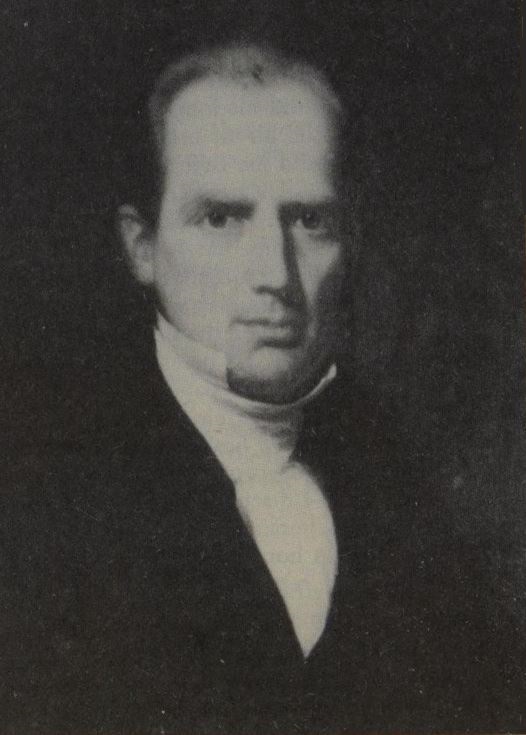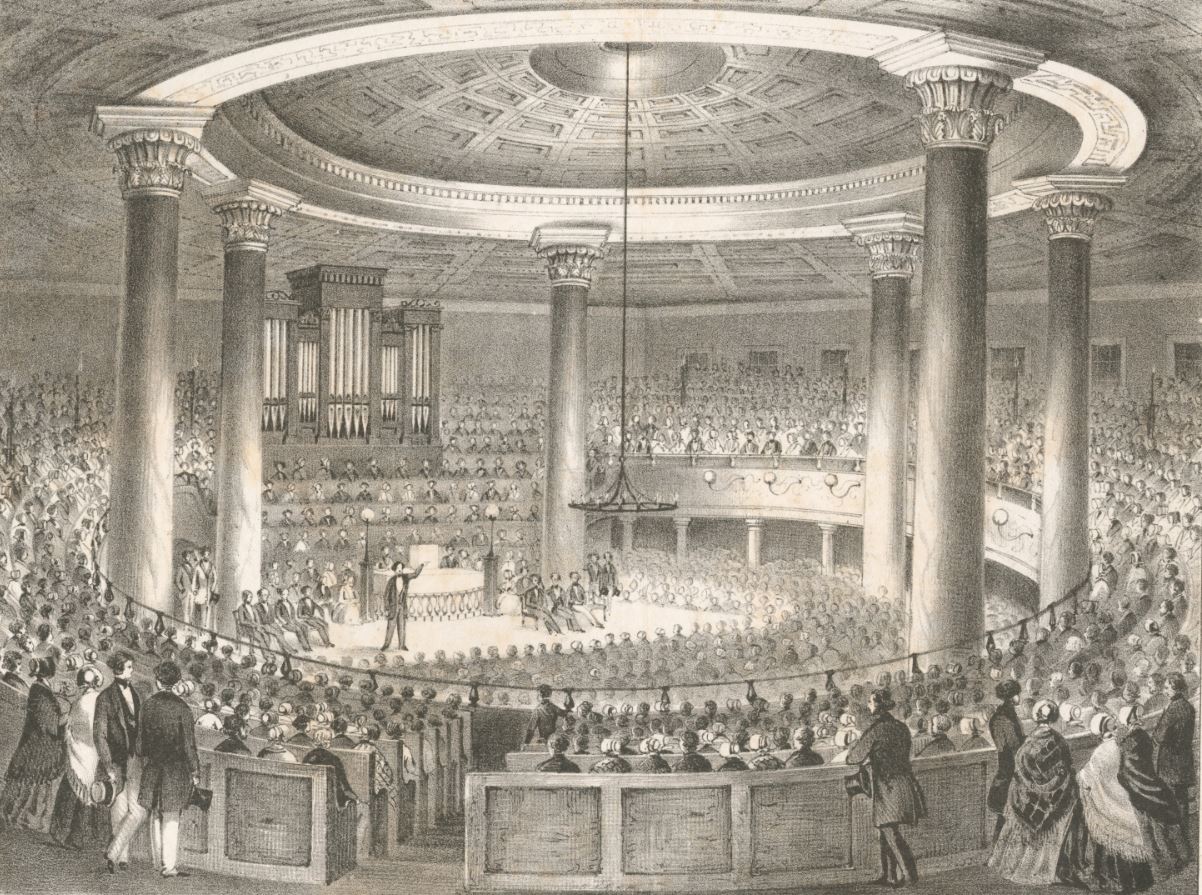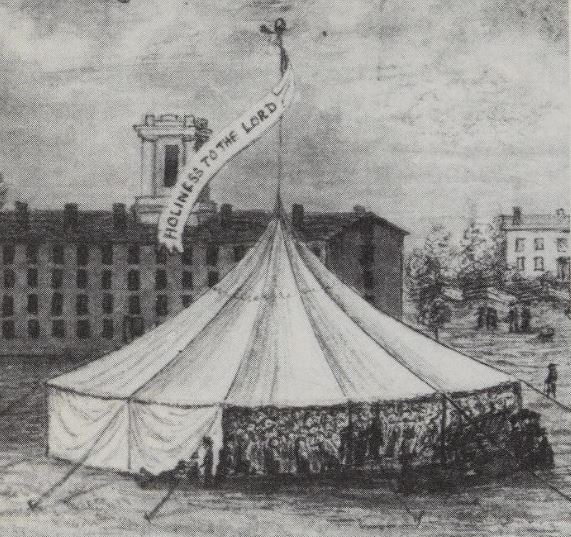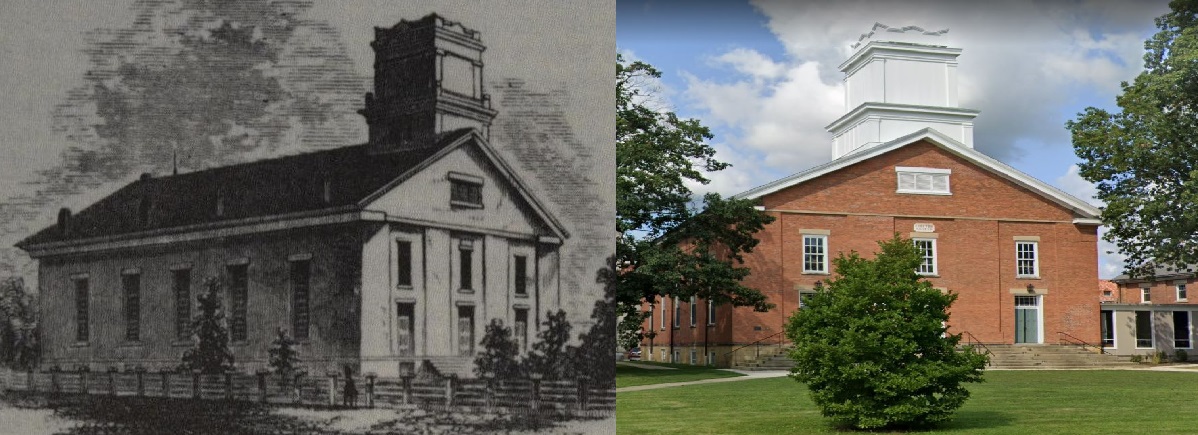


Charles Grandison Finney – Father of modern revivalism and the leading figure of the Second Great Awakening
Introduction
Charles G. Finney’s (1792-1875) unique methods of evangelism earned him the title of the “father of modern revivalism.” His methods paved the way for other mass-evangelists, like Dwight L. Moody, R. A. Torrey, John W. Chapman, Billy Sunday, and Billy Graham, who adapted and built upon Finney’s methods.
Background Information
With this revival account being one in a sequence of revivals during the life of Charles G. Finney, we recommend reading them in chronological order:
► 1824 Evans Mills German Settlement Revival
► 1824 Antwerp, New York Revival
► 1824 Revival at Perch River and Other Locations
► 1825 Revival in Gouverneur, New York
► 1825 Revival in De Kalb, New York
► 1825 Revival in Western, New York
► 1825 Revival in Rome, New York
► 1826 Revival in Utica, New York
► 1826 Revival in Auburn, New York
► 1826-1827 Revival in Troy, New York
► 1827 New Lebanon & Stephentown Revivals
► 1827-1829 Revival at Wilmington and Philadelphia
► 1829 Reading, Pennsylvania Revival
► 1829 Lancaster, Pennsylvania Revival
► 1829 Columbia, New York Revival
► 1830 New York City Revival
► 1830-1831 Rochester, New York Revival
► 1831 Revivals in Auburn, Buffalo, Providence & Boston
► 1832 New York City Revival
From New York City to Oberlin, Ohio
Charles Finney began pastoring churches in New York City in April 1832, and in 1835 was invited to become the Professor of Theology at Oberlin Collegiate Institute in Oberlin, Ohio. Finney accepted that invitation, with the stipulation that he would spend his summers in New York City, continuing to pastor Broadway Tabernacle, and teaching at Oberlin during the winters. This arrangement continued till April 1837 when Finney resigned from Broadway Tabernacle and settled permanently in Oberlin.

Broadway Tabernacle – 1832 New York City Revivals
Abolition, Underground Railroad, and Women’s Rights
In 1835, Oberlin College had close to 300 students, with many more coming the following year. Oberlin College was the first to admit blacks and women as students on an equal basis as white males.
The location also became a point of operation for the “underground railroad,” ferrying those fleeing slavery to freedom in Canada.
 Moral Map of the USA, from the American Anti-Slavery Society. The map shows the states that still had slavery in 1837.
Moral Map of the USA, from the American Anti-Slavery Society. The map shows the states that still had slavery in 1837.

Oberlin Holiness Tent, with its famous banner and overflow crowds
Tent to Seat 3,000
With no church in Oberlin, Ohio, Finney obtained donations for the purchase of a tent which could be used till a church could be built. The tent was set up in the town square every Sunday to hold public services. The tent was also used in the surrounding region to conduct services over several days (protracted services).

First Congregational Church: then and now (relatively the same)
First Congregational Church, Oberlin, Ohio
To serve as a house of worship for Oberlin College and the surrounding community, the First Congregational Church was built in 1842-1843 on the corner of West Lorain and North Main Streets in Oberlin, Ohio. On the completion of the building, the tent that was previously used was sold to the Anti-Slavery Society in 1847.
Finney was the pastor of the First Congregational Church from 1837 to 1872, when it was recognized as being the largest church west of the Alleghenies, with seating for 1,800.
Continual Revival
The period of 1835 to 1840 was said to have been one of continual revival. Though there was a slackening of the revival’s influence following 1840, there was still a continual flow of converts leading up to the 1857 Layman’s Prayer Revival that affected the entire nation, and there were frequent revivals after that.
Of the students that came to Oberlin College, Finney wrote:
Our students were converted by scores from year to year, and the Lord overshadowed us continually with the cloud of His mercy. Gales of divine influence swept over us from year to year, leaving us His fruits among us abundantly of love, joy, peace, longsuffering, gentleness, temperance, goodness, faith.
The entire area around Oberlin was impacted, as stated in The Oberlin Evangelist, on June 8, 1853:
The power of those revivals reached the entire people. It did not indeed convert all, but it left none outside the pale of its influence.
In that same paper we read of the “continual revival”:
It deserves to be said with great distinctness that probably no month since the college was founded here has been so intensely parched with drought that no mercy drops have fallen upon us. Probably every Sabbath has brought some into the house of God in a solemn state of mind, with a more or less earnest enquiry for the way of salvation.
The number of new members that were added to the Oberlin Church “averaged fifty per year for the years 1835-1856.”

View of Oberlin College in 1847, with the First Congregational Church on the right
Revivals Fade Due to Laxness of Older Christians
After over 10 years of revival ministry, Finney recognized and acknowledged that older members of congregations were highly prone to fall back from a revived state much quicker than new converts. Their apathy and general indifference rapidly extinguished the fires of revival after they grew tired with the labor that accompanied revival.
Finney confessed that though he didn’t “backslide” [grow cold and indifferent], the temptation was there, requiring him to frequently set days aside for
fasting and prayer, and to spend much time in overhauling my own religious life in order to retain that communion with God, and that hold upon the divine strength, that would enable me efficiently to labor for the promotion of revivals of religion.
To illustrate Finney’s pursuit of a perpetually revived state, he said that the last winter he spent in New York City he had powerful encounters with God that revived and restored his soul:
After a season of great searching of heart He brought me, as He has often done, into a large place, and gave me much of that divine sweetness in my soul of which President Edwards speaks as an experience of his own soul. That winter I had a thorough breaking up, so much so that sometimes for a considerable period I could not refrain from loud weeping in view of my own sins, and of the love of God in Christ.
Results of the Oberlin Revivals
► There were approximately 1,050 members added to the Oberlin church from 1835-1856. That was an average of 50 per year.
► The Gospel powerfully impacted all living in Oberlin, Ohio, as well as those in surrounding communities.
► Every Sunday service had those either converting to Christ or enquiring as to the means of salvation.
► “Scores” of students at the college were converted each year.
► After graduation, Oberlin students were scattered into various parts of the United States and in missionary stations around the globe.
Finney Revival Account List
Access all accounts of Finney’s revivals using this link.
Primary Sources
► Chapter XXIV Early Labors in Oberlin: The Memoirs of Charles G. Finney by Charles G. Finney
► The Memoirs of Charles G. Finney: The Complete Restored Text by Charles G. Finney
Secondary Sources
► Charles G. Finney by Wikipedia
► Charles Grandison Finney & the Second Phase of the Second Great Awakening by Christian History Institute
► Great Revivals and the Great Republic by Warren Candler
► Lectures on Revivals of Religion by Charles G. Finney
► Man of Like Passions: The Life Story of Charles Grandison Finney by Richard E. Day
► Memoirs of Revivals of Religion by Charles G. Finney
► Lectures on Systematic Theology by Charles G. Finney
Return to List of Revival Stories
Chet & Phyllis Swearingen:
Office: (260) 920-8248
romans1015@outlook.com
Beautiful Feet
P.O. Box 915
Auburn, IN 46706

